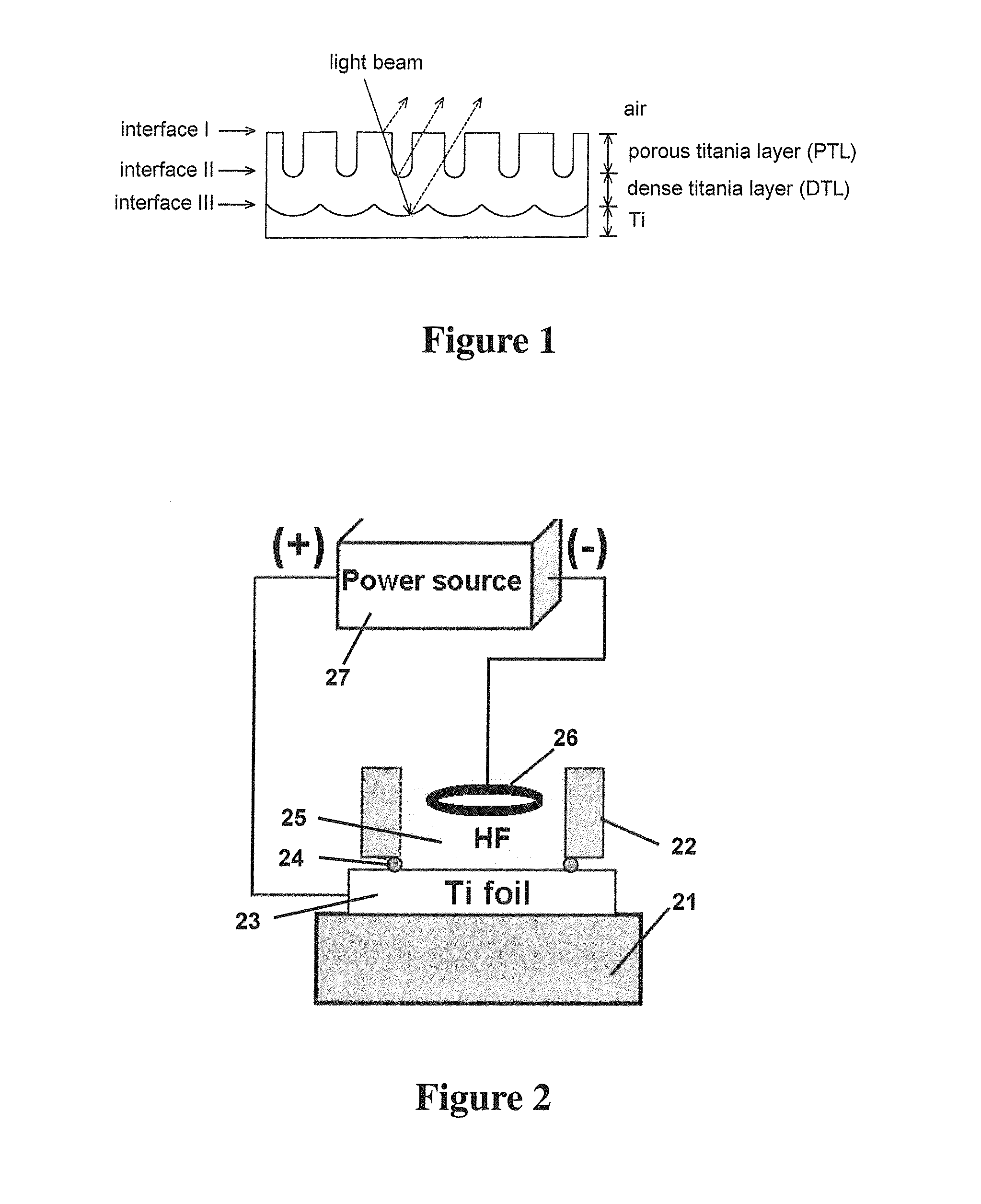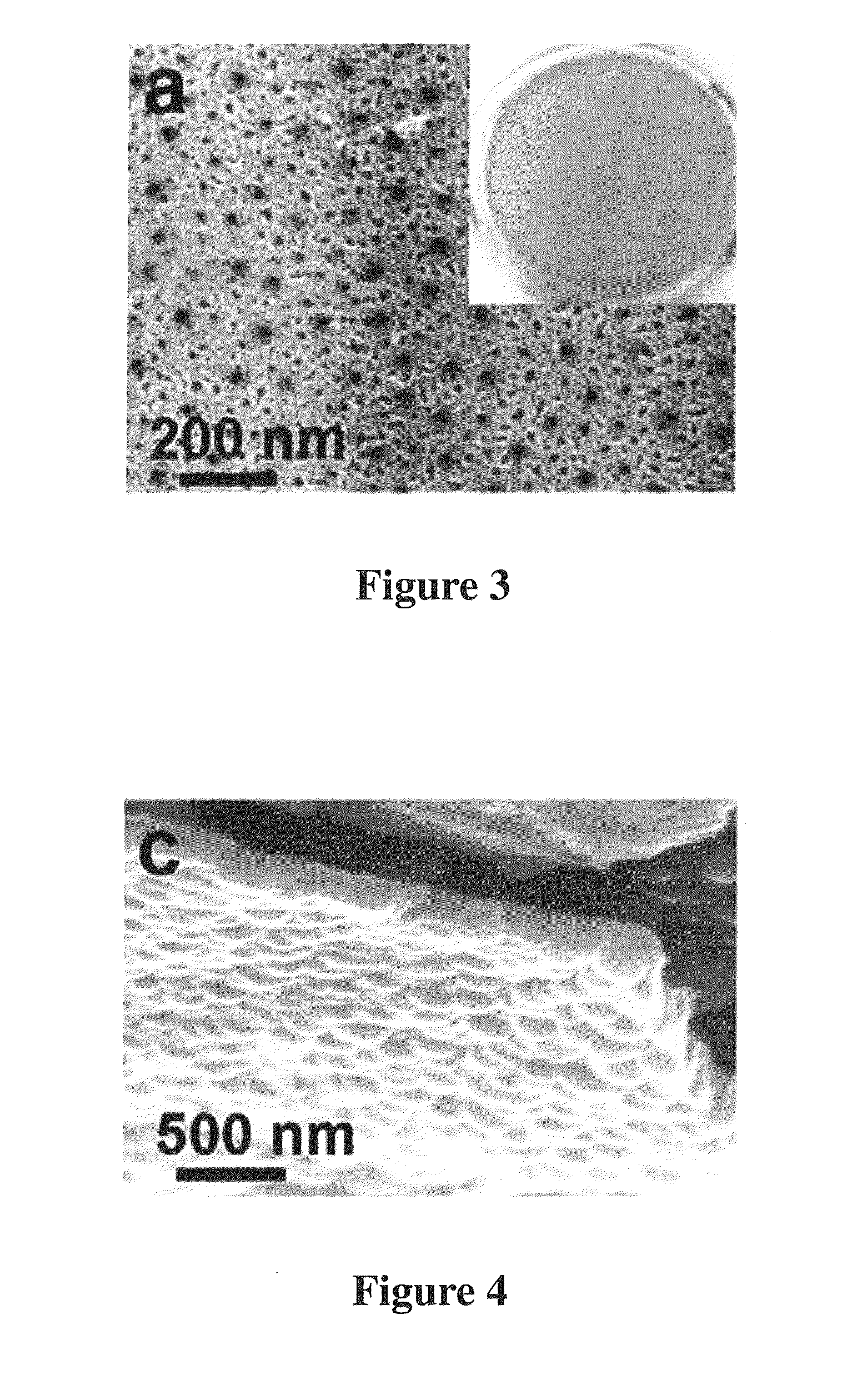Method of making a porous tio2 photonic film
- Summary
- Abstract
- Description
- Claims
- Application Information
AI Technical Summary
Benefits of technology
Problems solved by technology
Method used
Image
Examples
Embodiment Construction
[0027]The flowing description is given by way of example only to illustrate the invention and is not intended to limit the scope of use or functionality of the invention. The invention is illustrated as practiced in making a photonic film, however, those skilled in the art will understand that a foraminous structure made according to the invention may have a variety of uses.
[0028]In the following discussion mesoporous refers to a material having foramen, or mesopores, size ranging from 2 to 50 nm. Microporous materials have pore diameters of less than 2 nm and macroporous materials have pore diameters of greater than 50 nm. In its preferred embodiment the current invention provide a mesoporous film. However, this is not essential to the invention and embodiments of the invention may be mesoporous or macroporous. A film according to the invention is also multilayer in that it comprises at least a first dense layer of TiO2 and a second layer of porous TiO2.
[0029]A preferred embodiment...
PUM
| Property | Measurement | Unit |
|---|---|---|
| Volume | aaaaa | aaaaa |
| Thickness | aaaaa | aaaaa |
| Thickness | aaaaa | aaaaa |
Abstract
Description
Claims
Application Information
 Login to View More
Login to View More - R&D
- Intellectual Property
- Life Sciences
- Materials
- Tech Scout
- Unparalleled Data Quality
- Higher Quality Content
- 60% Fewer Hallucinations
Browse by: Latest US Patents, China's latest patents, Technical Efficacy Thesaurus, Application Domain, Technology Topic, Popular Technical Reports.
© 2025 PatSnap. All rights reserved.Legal|Privacy policy|Modern Slavery Act Transparency Statement|Sitemap|About US| Contact US: help@patsnap.com



